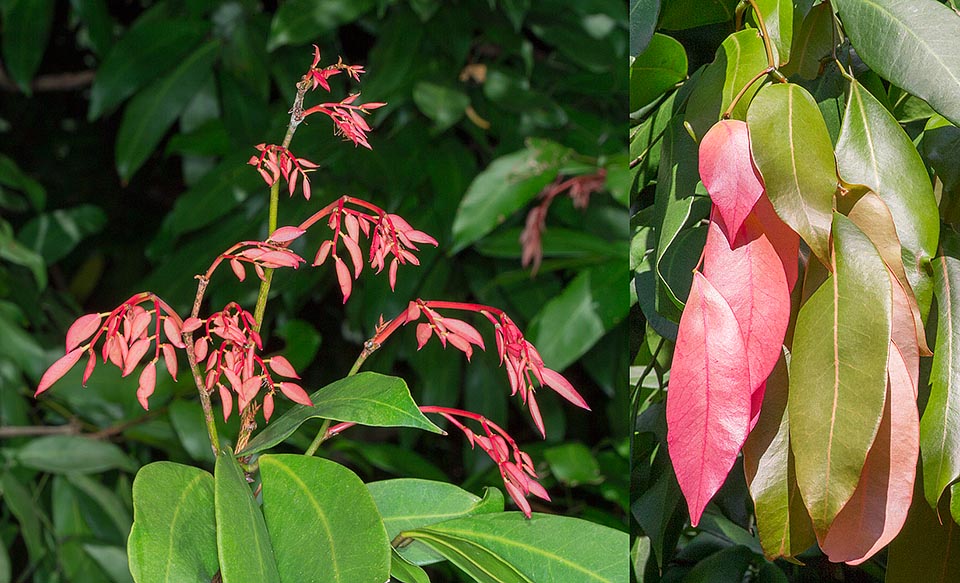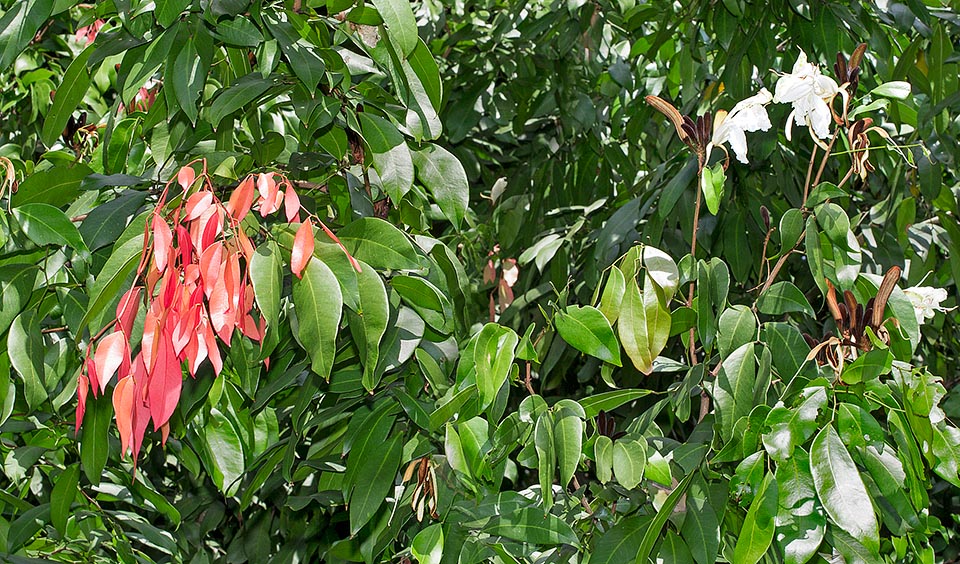Family : Fabaceae

Text © Pietro Puccio

English translation by Mario Beltramini

Baikiaea insignis is native to tropical Africa where may be 30 m tall © Giuseppe Mazza
The genus is honoured to the Scottish physician, naturalist and explorer William Balfour Baikie (1825-1864); the specific name is the Latin adjective “insignis, e” = eminent, extraordinary.
Common names: nkoba, nkobakoba (Uganda).
The Baikiaea insignis Benth. (1866) is an evergreen tree, 5-30 m tall and of 0,2-1 m of diameter, with smooth or slightly vertically fissured bark of brown grey colour.
The leaves, spirally arranged on a short petiole, are imparipinnate, up to about 30 cm long, with 1-4 pairs of pinnules, usually alternate, oblong-elliptic to ovate-lanceolate, 5-20 cm long and 3-12 cm broad, with usually pointed apex and entire margin, coriaceous, of dark green colour; the young leaves are of a pinkish colour.
The inflorescences, on a 2-2,5 cm long peduncle, are terminal or subterminal racemes covered by thick brown tomentum, 8-10 cm long, bearing few hermaphroditic flowers that gradually open.
Calyx with an about 2 cm long tube and 4 oblong-linear lobes, 5-10 cm long, corolla with 5 obovate petals with slightly ruffled margins, 6-15 cm long and 4-8 cm broad, 4 of which are white or cream white and one, slightly less broad, lemon yellow, 10 stamina, of which one free and the others merged at the base, 6-18 cm long, superior ovary and 5-10 cm long style; the flowers, perfumed and rather flabby, open in the evening and wither the afternoon of the following day.
The fruit is a woody legume, flat, covered by brown tomentum, 15-50 cm long and 2-9 cm broad, opening in an explosive way, containing numerous ellipsoid flat seeds, 3-4 cm long and 1,5-3 cm broad, of dark red colour.
It reproduces by seed, previously kept in water for one day, in organic draining loam maintained constantly humid at the temperature of 26-28 °C.

Gaudy red flowers? Not at all, tender new leaves that growing coriaceous become of a nice glossy dark green © Giuseppe Mazza

Here the contrast with the old leaves is at most. The flowers at right, cream white, are perfumed but flabby and last less than one day © Giuseppe Mazza

Diffused in the wild but relatively little cultivated, creates vast shade zones, splendid green domes for freshening in the vast tropical gardens © Giuseppe Mazza
→ To appreciate the biodiversity within the family of FABACEAE please click here.
